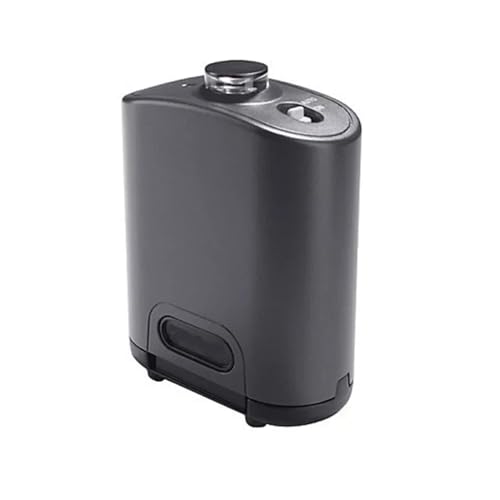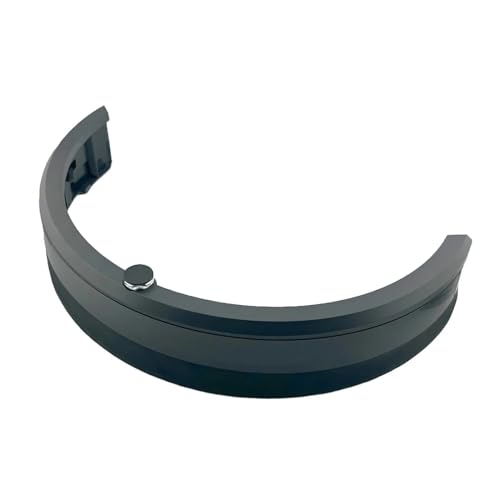The iRobot Roomba 980 represents a significant leap forward in automated home cleaning, offering not just convenience but a high degree of control. Its intelligent navigation allows it to efficiently clean your home, but one of its most powerful features is the ability to create virtual boundaries. These “no-go lines” are essential for anyone looking to customize their cleaning routine, protect delicate items, or manage spaces with pets, turning a smart vacuum into a truly intelligent home assistant.
This article provides a comprehensive look at the Roomba 980’s no-go line functionality. We will explore the different methods you can use to establish these boundaries, from physical devices to digital mapping within the iRobot Home app. Furthermore, you will learn about the distinct advantages of using these features, how to troubleshoot common issues that may arise, and the best practices to ensure your Roomba respects the zones you’ve established every single time.
Exploring Roomba 980 Boundary Control
At its core, a no-go line is a virtual barrier that you create to dictate where your Roomba 980 can and cannot travel. When the robot’s advanced sensors detect one of these pre-set boundaries, it recognizes the signal, stops its forward movement, and changes direction to avoid crossing into the restricted zone. This capability is powered by the Roomba 980’s sophisticated IAP 2.0 navigation system, which uses a combination of an integrated camera and multiple sensors to create a detailed map of your home. This mapping technology not only enables efficient, methodical cleaning paths but also allows the robot to precisely identify and remember the location of these user-defined no-go zones.
The primary purpose of these lines is to give you complete command over the cleaning area. You can effectively cordon off entire rooms, protect specific areas with fragile furniture, or prevent the vacuum from getting tangled in a cluster of cables under your desk. You can also create a barrier to keep the Roomba away from pet food and water bowls, ensuring your furry friends are not disturbed. By defining these boundaries, you optimize the robot’s cleaning path, making its operation more efficient and tailored to the unique layout of your home.
Methods for Creating No-Go Lines
The Roomba 980 offers several versatile methods for setting up virtual boundaries, each suited for different situations and preferences. You can choose between physical devices that emit infrared signals or a purely digital approach using the companion app.
The Virtual Wall Lighthouse
The Virtual Wall Lighthouse is a small, battery-powered tower that serves a dual purpose. Its primary function is to project a straight, invisible infrared beam up to 10 feet long, creating a distinct line that the Roomba 980 will not cross. This is perfect for blocking off doorways to rooms you don’t want cleaned or preventing access to open-plan areas.
- Setup and Use: Simply place the Lighthouse on the floor, aiming the beam across the threshold you wish to block. Once turned on, the Roomba will detect the signal during its cleaning cycle and treat it as a solid wall.
- Lighthouse Mode: In addition to blocking, the device can be switched to “Lighthouse” mode. In this setting, it contains the Roomba within one room until it is fully cleaned, then guides it to the next designated area, enabling sequential, room-by-room cleaning in larger homes.
If you need to replace a lost or malfunctioning Virtual Wall Lighthouse, or want to expand your Roomba’s boundary control capabilities with additional units.
Roomba Virtual Wall Lighthouse
iRobot Authentic Dual Mode Virtual Wall

Official iRobot replacement with dual modes for precise area control.
Avaenzo 2-Pack Dual Mode Virtual Wall

Affordable 2-pack with dual modes and wide compatibility for modern Roomba models.
Dual Mode Virtual Wall for Roomba

Budget-friendly option with clear barrier range and easy setup.
QiyilE Navigation Lighthouse Barrier

Flexible navigation lighthouse for Roomba models with collision avoidance.
Physical No-Go Strips
For more customized or intricate boundaries, the No-Go Strip offers a flexible physical solution. These are thin, adhesive-backed strips that you can place directly on the floor. The strip itself emits a gentle infrared signal that creates a virtual wall precisely where it’s laid down.
- Installation: The process is straightforward. Measure and cut the strip to your desired length. Then, peel off the protective backing and press the adhesive side firmly onto a clean, dry floor surface.
- Ideal Applications: No-Go strips are exceptionally useful for creating non-linear boundaries. You can use them to form a protective barrier around a delicate rug, circle the base of a floor lamp with a precarious cord, or block off a small, designated pet corner.
If you need to replace worn-out No-Go Strips, require more length for additional boundaries, or want to implement more complex, non-linear exclusion zones.
Search term for Amazon: Roomba No-Go Strips
The iRobot Home App
For the ultimate in convenience and digital control, the iRobot Home app allows you to create no-go lines directly on the smart map your Roomba 980 generates. After a few cleaning runs, the robot will have a detailed layout of your home stored in the app, which you can then edit.
- Step-by-Step Setup:
- Open the iRobot Home app on your smartphone and select your Roomba 980 from your list of devices.
- Navigate to the “Map” section to view the layout of your home.
- Identify the area you want to restrict. Tap and hold on the map to begin drawing a line.
- Drag your finger to position and size the line accurately. You can create multiple lines for different zones.
- Once you are satisfied with the placement, save the changes. The Roomba will now recognize these digital boundaries on its future cleaning jobs.
The Circular Invisible Barrier
A specialized feature often included with devices like the Virtual Wall Lighthouse is the ability to create a “halo” or circular invisible barrier. When this mode is activated, the device projects a protective ring with a diameter of about 4 feet. This is specifically designed to keep the Roomba from bumping into small, isolated objects, making it the perfect solution for protecting pet bowls, floor vases, or children’s toy areas without blocking off a large section of the room.
Effective Solutions for Common Issues
While the no-go line system is generally reliable, you might occasionally encounter issues. Most problems can be resolved with some simple troubleshooting steps.
Inconsistent Boundary Detection
If you find your Roomba 980 is ignoring or only sometimes detecting a no-go line, the issue is likely related to the infrared signal.
Obstructions and Placement
Ensure there are no physical objects like furniture, curtains, or rugs blocking the line of sight between the Roomba and the Virtual Wall Lighthouse or No-Go Strip. For the Lighthouse, check that it is positioned correctly and aimed properly across the threshold. For strips, make sure they are lying completely flat on the floor.
Signal Interference
Highly reflective surfaces, such as mirrors or polished metal, can sometimes bounce or scatter the infrared signal, confusing the Roomba’s sensors. Direct sunlight can also overwhelm the sensors. Try repositioning your Lighthouse or using a No-Go Strip in areas with potential interference.
Power and App Connectivity Problems
Sometimes the issue isn’t with the boundary itself but with the device creating it or the app controlling it.
Virtual Wall Battery Life
The Virtual Wall Lighthouse requires batteries to function. If the Roomba starts crossing the line, the first thing to check is the batteries. Replace them if they are low or dead to ensure a strong, consistent infrared beam.
If your Virtual Wall Lighthouse is not functioning due to depleted batteries, replacing them is crucial for restoring its ability to create effective no-go zones.
Aa Batteries
Energizer MAX AA Alkaline

Long-lasting power for diverse devices with reliable performance.
Duracell Coppertop AA 28-pack

Premium long-term storage with enhanced performance.
Powermax AA Alkaline 24-pack

Affordable option with reliable power and eco-conscious design.
ACDelco AA Alkaline 40-pack

High-capacity pack for home and office with durable performance.
iRobot Home App Glitches
If your app-drawn no-go lines are not working, verify they have been correctly drawn and, most importantly, saved within the map. If the problem persists, try refreshing the app. As a last resort, you can have the Roomba recalibrate and generate a new map of your home, after which you can redraw the boundaries.
Best Practices for Flawless Operation
To get the most out of your Roomba s no-go line features and ensure consistent performance, follow these simple best practices.
Strategic Placement
Always place your Virtual Wall or No-Go Strip at least 6 inches back from the edge of the area you want to protect, such as the top of a staircase or the edge of a rug. This buffer gives the Roomba’s sensors ample time and space to detect the boundary, stop, and turn away safely without overshooting.
Use Multiple Devices for Large Spaces
For larger homes or complex layouts, a single Virtual Wall Lighthouse may not be sufficient to manage all your desired zones. Don’t hesitate to use multiple Lighthouses to block several doorways or combine them with No-Go Strips and app-based lines for comprehensive boundary control.
Perform Regular Maintenance
Dust and debris can accumulate on the sensors of both the Roomba and the Virtual Wall Lighthouse. Periodically wipe these sensors with a clean, dry cloth to ensure nothing is obstructing the infrared signals. Also, check that your No-Go Strips are clean and still adhering properly to the floor.
If the Roomba’s internal sensors, which detect virtual walls and other obstacles, are consistently dirty or malfunctioning, they may need replacement to ensure proper navigation and boundary detection.
Roomba 980 Sensor Replacement
caSino187 Cliff & Bumper Sensors

Official compatible replacement for Roomba 980 cliff and bumper sensors.
SCREENTRONICS Sensor Bar

Sensor bar with dust bin and cliff sensors for Roomba 980 series.
caSino187 Top Bumper IR Sensor

Top bumper IR sensor for Roomba 980 and 900 series.
SQJZWOD Front Bumper & IR Sensor

Front bumper and IR sensor replacement for Roomba 980.
Frequently Asked Questions (FAQ)
How far from an edge should I place a no-go line?
It is recommended to place any physical no-go line, such as a Virtual Wall beam or a No-Go Strip, at least six inches away from the edge of the area you want to restrict. This provides a safe buffer for the Roomba to detect the line and change direction without risk.
What can interfere with my Roomba 980 detecting a no-go line?
Several factors can cause interference. Physical obstructions blocking the infrared signal, highly reflective surfaces like mirrors scattering the beam, direct sunlight overwhelming the sensors, or dust and grime covering the sensors on the Roomba or the barrier device can all lead to inconsistent detection.
Can I create boundaries for my Roomba 980 without physical devices?
Yes, absolutely. The iRobot Home app allows you to draw digital no-go lines and zones directly onto the smart map that your Roomba 980 creates. This is a convenient, device-free way to restrict access to certain rooms or areas.
What is the primary use of the Virtual Wall Lighthouse?
The Virtual Wall Lighthouse has two main functions. Its “Virtual Wall” mode projects an infrared beam to create a straight-line barrier that the Roomba will not cross. Its “Lighthouse” mode helps manage cleaning in multiple rooms by containing the Roomba in one area until it’s clean, then guiding it to the next.
Conclusion
The no-go line capabilities of the Roomba 980 elevate it from a simple robotic vacuum to a highly sophisticated and customizable cleaning tool. By offering a variety of methods—including the Virtual Wall Lighthouse, physical No-Go Strips, and intuitive app-based controls—iRobot empowers users to tailor the cleaning process precisely to their home’s unique needs. These features provide peace of mind by protecting valuable items, ensuring pet safety, and improving overall cleaning efficiency. By following a few best practices for setup and maintenance, you can ensure these virtual boundaries work flawlessly, giving you complete control over your automated cleaning routine.
